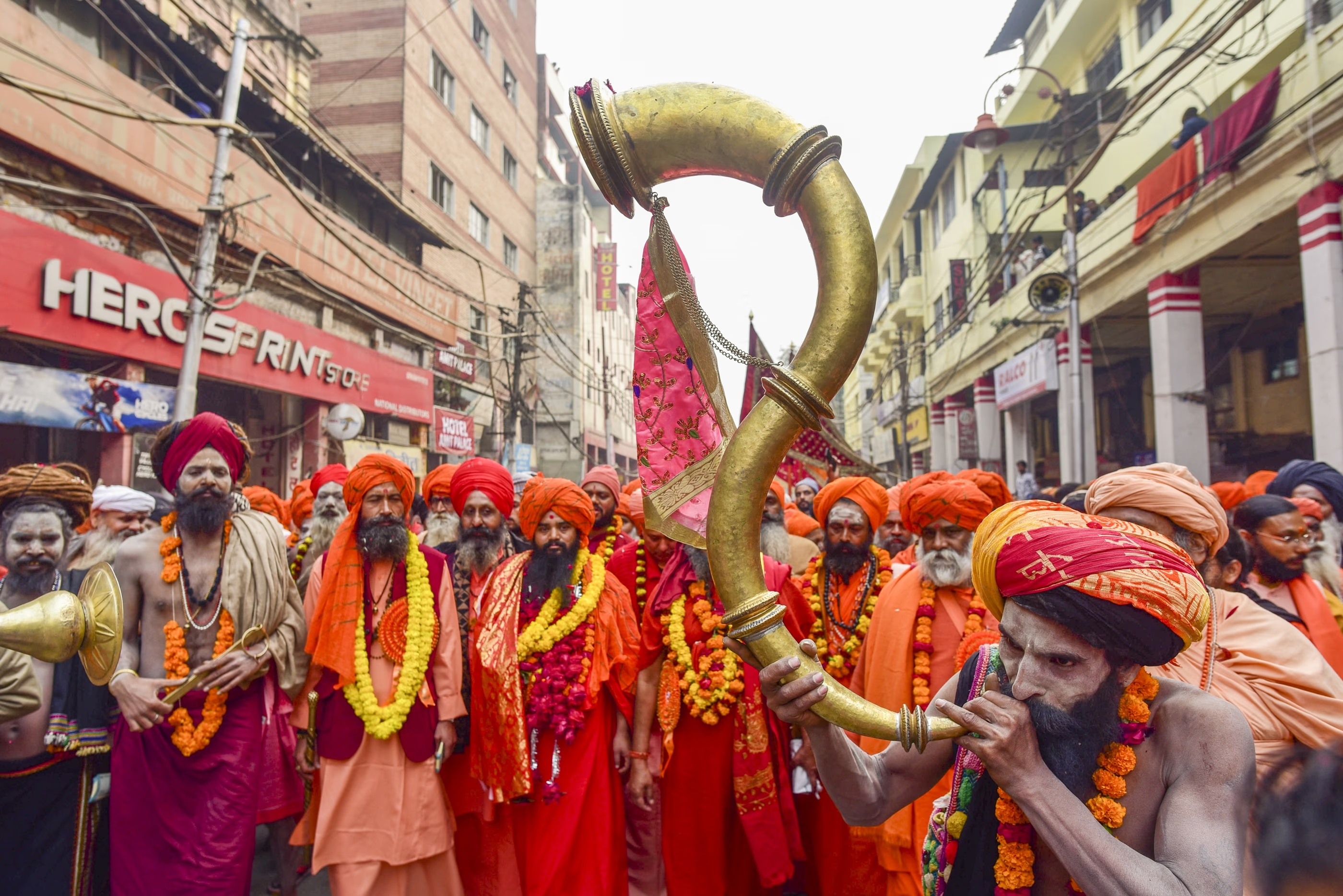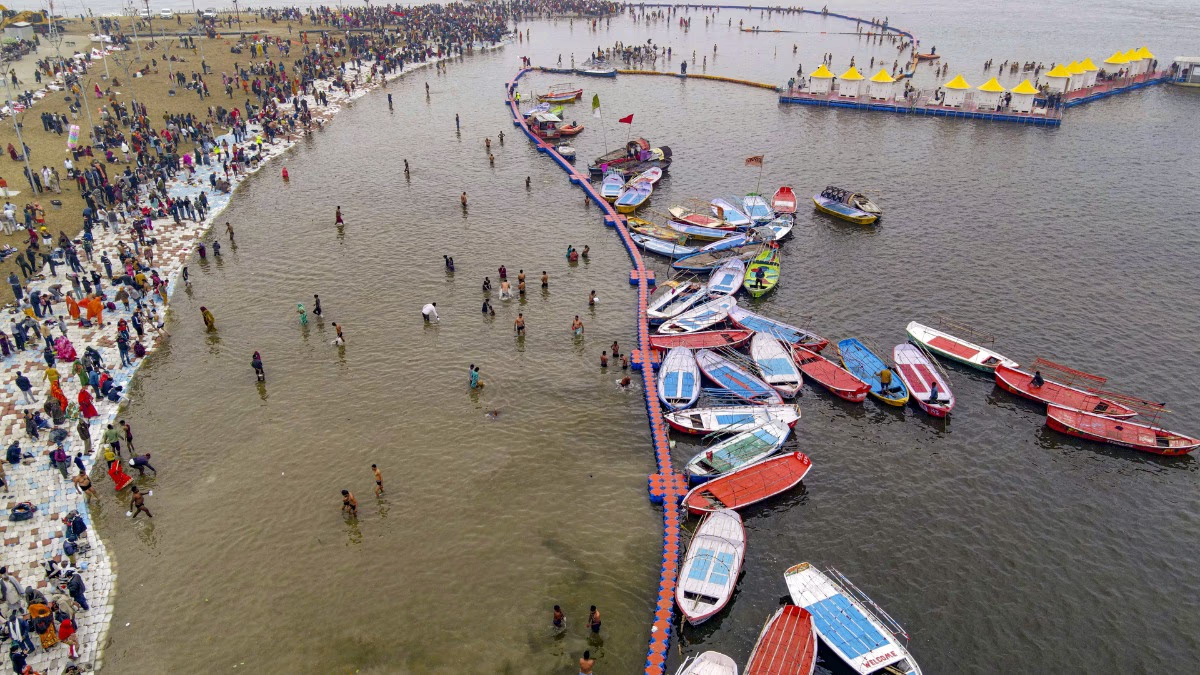Prayagraj Kumbh Mela 2025: In 1942, British Viceroy Linlithgow witnessed the Kumbh gathering with Madan Mohan Malaviya at his side. Millions of devoted souls gathered, shivering in the chilly air, taking dips at the confluence's edge. Witnessing this grand assembly, the London gentleman was astounded. Curious, he inquired of Malaviya Ji, 'Surely, inviting so many to the Kumbh requires a lot of money and effort?'
With a smile, Malaviya Ji replied, 'Just two coins!' The British officer Linlithgow was taken aback. 'Only two coins, how is this possible?' To unravel the mystery, Linlithgow asked. Malaviya Ji promptly satisfied his curiosity. He pulled a long almanac from his pocket, showing it to the British officer, and explained, 'This two-paisa almanac tells everyone across India when the Kumbh is, the bathing dates, and so they set off on this pilgrimage driven by faith.'
The Times of India, based on records from Prayagraj's archives, revealed that the Maha Kumbh of 1882 cost 20,288 rupees. In contrast, the Maha Kumbh 2025 budget is 7500 crore rupees. During the Kumbh of 1894, nearly 10 lakh pilgrims, out of a population of 23 crores, bathed. That event cost 69,427 rupees.
The enigmatic Kumbh has long fascinated Western scholars. This Maha Kumbh will witness the visit of Apple co-founder Steve Jobs' wife, Laurene Powell Jobs, for Kalpavas, though such trends are age-old.

Source: aajtak
And the intrigue continues, tracing back to Megasthenes (3rd-4th century BC), Fa Hien (399-411 AD), and Xuanzang (7th century). The quest for Kumbh's nectar, the search for immortality, and the strong desire to wash away sins with water draw the learned from across the globe to Kumbh every 12 years.
'Beyond Imagination for Us Whites'
American author and thinker Mark Twain, who deemed India the cradle of humanity and the grandmother of tradition, was amazed by the massive crowd at Prayagraj. Over 125 years ago (1894-95), he visited this incredible gathering. In his book 'Following the Equator: A Journey Around the World' published in 1887, Twain remarked on India's enchantingly contrasting spirit.
'It's remarkable—the power of belief that propels so many elderly and frail, young and weak, to embark on such daunting journeys without hesitation or complaint. They endure the ensuing hardships with a stoic sense of devotion or maybe fear; I'm unsure. Whatever the driving force, the resulting actions remain unimaginable and wonderful for us cold, rational whites.'
Mark Twain spent two months in India, circling 16 cities. Reflecting on his journey, he wrote,
'Truly India—a land of dreams and romance, wealth and poverty, opulence and squalor, palaces and hovels, tigers and elephants, cobras, and jungles.'
Faith indeed works miracles
In January to April 1894-95, when Twain arrived in Prayagraj, he stayed at the Great Northern Hotel. His perception of India extended to the Kumbh festival as well,
'These pilgrims came from across India, some traveling for months with patience amid heat and dust, weary and impoverished, hungry, yet sustained by an unwavering belief.'
Twain reflected on the pilgrims' faith as he observed,
'A mere ten steps from the shore, crowds of men, women, and fair maidens were knee-deep in water, cupping river water in their hands to drink. Faith can indeed provoke miracles, and this serves as an example. They did not drink the unclean water to quench thirst, but to purify their soul and body.'
Truly, this was all of India
The country's first Prime Minister, Jawaharlal Nehru, was astounded by the Kumbh Mela, writing in 'The Discovery of India,' "Truly, this was all of India—such a profound belief that pulls their ancestors from every corner of the country for thousands of years." The 1954 Maha Kumbh attracted notable VVIPs, including the then-President Dr. Rajendra Prasad and Prime Minister Jawaharlal Nehru.

Source: aajtak
Kumbh Mela is perhaps the grandest celebration of Hindu faith, where all sects of Hinduism come together at the convergence. Veteran journalist Mark Tully, who extensively covered India, captured the grandeur of Kumbh beautifully.
No frenzy here, just the serene certainty of devotion
Mark Tully recounts fondly,
'Having spent years in India, witnessing numerous grand spectacles, nothing quite matched the splendor of the Maha Kumbh. I attended twice, with great throngs assembling, yet nowhere else did I see such a congregation like at Allahabad's Kumbh.'
Detailing his 1989 Kumbh experience, Tully wrote,
'Never have I been in such a calm crowd. There was no frenzy, just the calm certainty of faith.'
Peering into the mystical world of Naga Sadhus, Tully described,
'One of Maha Kumbh's most extraordinary sights is naked sadhus dancing with exuberance amid the crowds, marching in rhythm to the drums to immerse in the river.'
Chronicling India's changes over decades, Tully notes that some sadhus preach during Kumbh, reflecting Hinduism's tolerance. However, he remarks in BBC Hindi that amidst some conservatism, profound wisdom shines through.
During Kumbh, Tully also encountered sects devoted to Kabir, a prominent figure of the Nirguna tradition. He writes in the BBC, 'Kabir's followers disapprove of deity images, seeing no difference between bathing in the Ganges or a tap. Yet their views faced no opposition, as Hinduism embraces diversity.'
To Kabir, the Kumbh represents the human body itself. He expresses,
'In water is the pot, and in the pot is water, Inside out, water, plain and simple. When the pot breaks, water merges with water—a true realization for the wise.'
The implication is that when our body—the metaphorical pot—breaks, our soul ultimately dissolves into the ultimate reality.




